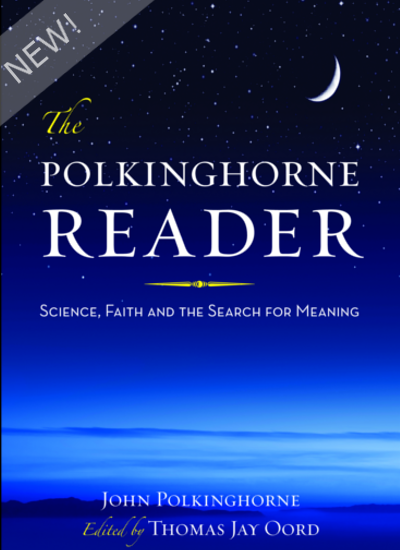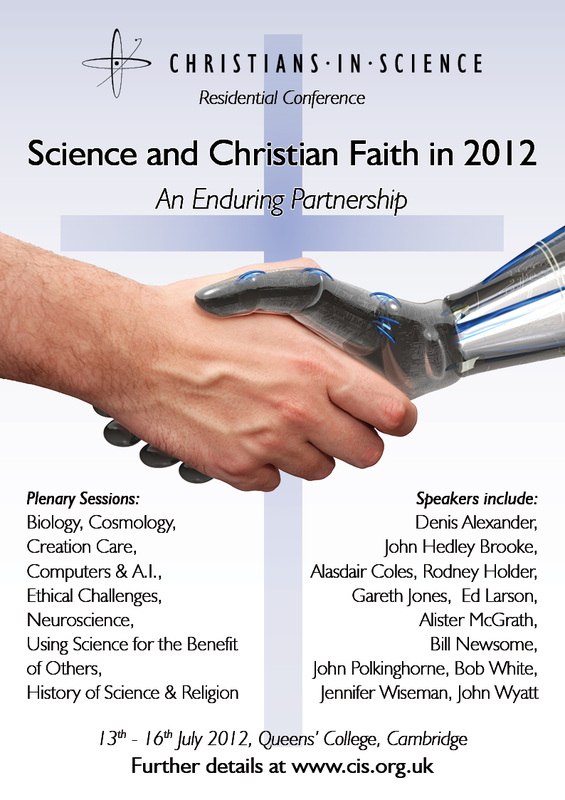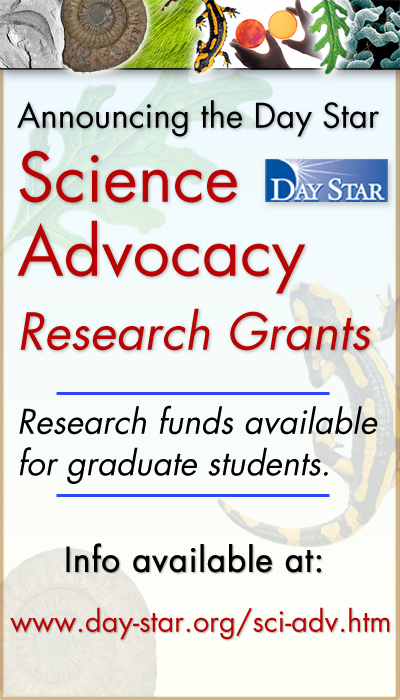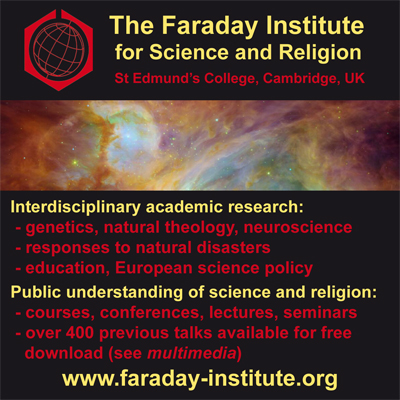Adam and the Origin of Man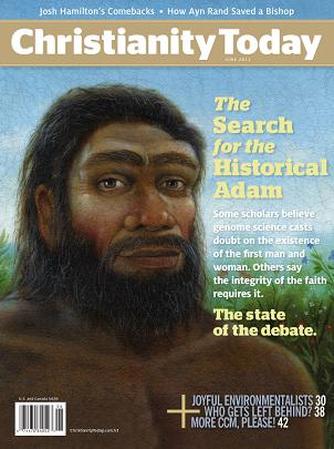 A controversial feature article from the Dec 2010 PSCF journal
by Sy Garte
As a scientist who has given his life over to Christ, it is clear to me that apparent contradictions between the Word of God in the Holy Bible, and our scientifically gained knowledge of God’s creation must be due to errors or misinterpretations of either or both of these sources of truth. This essay is an attempt to address one such apparent contradiction, and is meant to be a starting point for discussion. While many of us hold a deep faith that Biblical truth and our scientific knowledge should not be in conflict, there are times when that faith can be tested. One of the most troubling examples of a possible conflict between the results of modern science and the Word of the Holy Bible is the issue of the historicity of Adam and Eve, created by God as the first humans. For Christians, this is an important issue, since the apostle Paul speaks of Adam as the first man in the context of Christ as redeeming mankind from sin. Adam’s fall from Grace is a crucial component of the belief in the power of Christ to redeem us from sin—and yet the science is clear that at no time was there a single human couple in the world, from whom all human beings are biologically descended. We know from evolutionary biology that several hominid species inhabited the world for at least 5 million years, and that about 200,000 to 300,000 years ago, Homo sapiens, our own species, arose in Africa. These creatures were anatomically and genetically as similar to us as we are to our fellow human beings all over the world. But these Homo sapiens were not exactly like us. Culturally, and probably intellectually, they had more in common with their close cousins, the Neanderthals in Europe, and with other hominids living in Asia, than they had with us. They did not paint pictures, make sophisticated tools, fish, travel, indulge in ceremonies, or speak complex languages. Until about 50,000 years ago, these people were much less technically minded than we are, less adventurous, less artistic, less ceremonial and less articulate in speech. And then, quite dramatically, something happened, and human beings began to do things they hadn’t done before. Their tools became highly sophisticated and classifiable. They began to make beautiful wall paintings and sculpted figures. They learned how to fish. From a population that had shrunk almost to the point of extinction, their numbers exploded, and they began to move out of Africa and occupy the entire world. In Europe and Asia, they eventually displaced the indigenous hominid populations, whose culture and technology more closely resembled the African Homo sapiens before this rather abrupt change in the character of human beings. The change has been called the Upper Paleolithic Revolution (UPR), and Jared Diamond calls it the Great Leap Forward. There are many unanswered questions and controversies related to the UPR—what is not controversial is that despite low populations of Homo sapiens before 50,000 years ago, there was never a time when there were only 2 human beings on Earth.
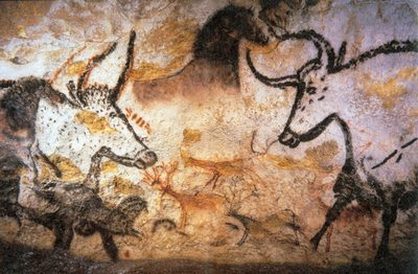 Upper Paleolithic cave art
Nobody knows what caused the UPR, and the emergence of truly modern people, indistinguishable from us, not only physically, but mentally, emotionally, spiritually and artistically.
One theory is that a subtle genetic change led to an improvement in our speaking ability. There are many unanswered questions and controversies related to the UPR—what is not controversial is that despite low populations of Homo sapiens before 50,000 years ago, there was never a time when there were only 2 human beings on Earth. The genetic data is quite clear on this point. And yet, the archeological evidence for the UPR does strongly suggest that at some point in the evolution of modern humans, there was a sharp discontinuity in the normal slow, evolutionary process. Within a short period of time, truly modern people—people who were fully conscious, artistic, eloquent, thoughtful, and ceremonial, dominated the entire human population either by cultural transfer or genetic selective advantage. This is what we know from science about the recent evolution of our species. What about the word of God? The Bible appears to present two versions of the origin of humanity, one in Genesis 1 and one in Genesis 2, which may have been written by different authors, and which would seem to be inconsistent with each other. But there is a way to read Genesis that avoids any internal contradictions and is consistent with our scientific understanding of the origin of human beings. Dick Fisher (www.historicaladam.org) has written about the logic of decoupling the concept of Adam and Eve as special creations of God with the idea that they were the first human couple. Others have proposed that the humans created on Day 6 in Genesis 1 preceded Adam, and that Adam was not the first biological human being, but the first spiritual human being with a soul. This interpretation of Genesis 1 as describing the creation of “pre Adamite” people allows us to retain our Christian understanding of the uniqueness of the creation of Adam, his sin and fall, and our redemption through Christ. Genesis 1 is about the creation of Homo sapiens, which follows along the same (evolutionary) path as the creation of plants and animals, while Genesis 2 is about the creation of the first modern human being, the first farmer, thinker, feeler, worshipper, sinner.
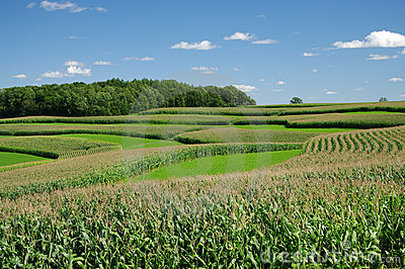 Plants of the field...
In Genesis 2:5. it is stated, “…no shrub of the field had yet appeared on the earth and no plant of the field had yet sprung up, for the LORD God had not sent rain on the earth and there was no man to work the ground.”
The beginning of this verse refers to certain wild desert plants, and to crops. Most interpretations of this verse suggest that there were no men to work the fields because this was before the creation of human beings. But the text could be read to mean that there no men with the expertise to raise crops—in other words, there were no farmers. Genesis 2:5, according to this interpretation, does not speak of the first biological creation of human beings, but of the divine creation of a special man, a farmer, with the intellectual and cultural tools to work the land. We know that agriculture was the most important cultural and technological development in the history of humanity, and so did the ancient inhabitants of the Near East. Genesis 2:7 does not say that Adam was, “The first man.” The text says that God created Ha Adam, “The man,” out of Adamah, or, “man from earth.” The man who will work the Earth, raise the crops, and care for the Garden is himself created from earth. Plan Adam and Eve were special in many ways compared to the other humans alive at the time, (who were the biological descendents of the human beings created on Day 6). God told Adam to give names to everything, implying that Adam had more advanced language skills than the people created earlier. Adam had a soul, he had language, and he had desire and was capable of sin. The story of the fall is the story of the sin of Adam and Eve, their banishment from the garden, and their life in the real hard world. Their son Cain worries that he will be killed by the other humans, who by now have come to know some of the things that Adam and Eve know. Cain talks about building a city (implying that agriculture has now spread) and takes one of these people for a wife. This interpretation is consistent with the genetic evidence that Adam and Eve were not alone on the planet, and that other humans (those who had been created in Genesis 1) were busy hunting and gathering. Genesis 1 is about the creation of Homo sapiens, which follows along the same (evolutionary) path as the creation of plants and animals, while Genesis 2 is about the creation of the first modern human being, the first farmer, thinker, feeler, worshipper, sinner. Theologically, this approach retains Adam and Eve as real historical figures, and the founders of the modern human race. Adam would have been the leader of those around him, and would have spread his knowledge and skills to the others. The displacement of Adam as the single biological ancestor of all who came later does nothing to diminish the theological centrality of Adam. In a cultural sense, Adam is clearly the father of humanity. His knowledge of farming and God, language and sin was quickly disseminated to his fellow human beings, and his fall affected all mankind and all its future generations. While it is striking that both this biblical interpretation and the archeological, scientific evidence suggest a two stage, discontinuous process in the evolution of modern man, it is not being suggested that the creation of Adam is perfectly concordant with the UPR, since the timing (4,000, vs. 50,000 years ago), the location (the middle East vs. Africa) and other aspects do not match. For example, we know that the emergence of modern human beings at the UPR included many new attributes such as worship, language, art and technology, but not agriculture, which arose 30-40,000 years later. There is no need to doubt the historicity of Adam as a real person, created by God, whose sin brought evil into the world as Paul tells us in Romans 5. In I Corinthians, Paul states that Adam is the first human being, but it seems likely that Paul was not referring to a biological entity but a spiritual one, since it is the spiritual aspects of Adam and Christ that are explicitly described in verses42-47. By referring to Christ as, “the second man” the text is not using a biologically literal meaning. Paul’s reference to Adam as the first spiritual man is totally in keeping with God’s creation of Adam in Genesis 2:7 as the first spiritual or modern man. There is no need for Christians who accept science to deny Adam’s historical reality, nor that he was the bringer of sin, nor that he was the first culturally and spiritually modern man. In this case, the Book of His Works and the Word of the Lord, portray a single, consistent truth. |



